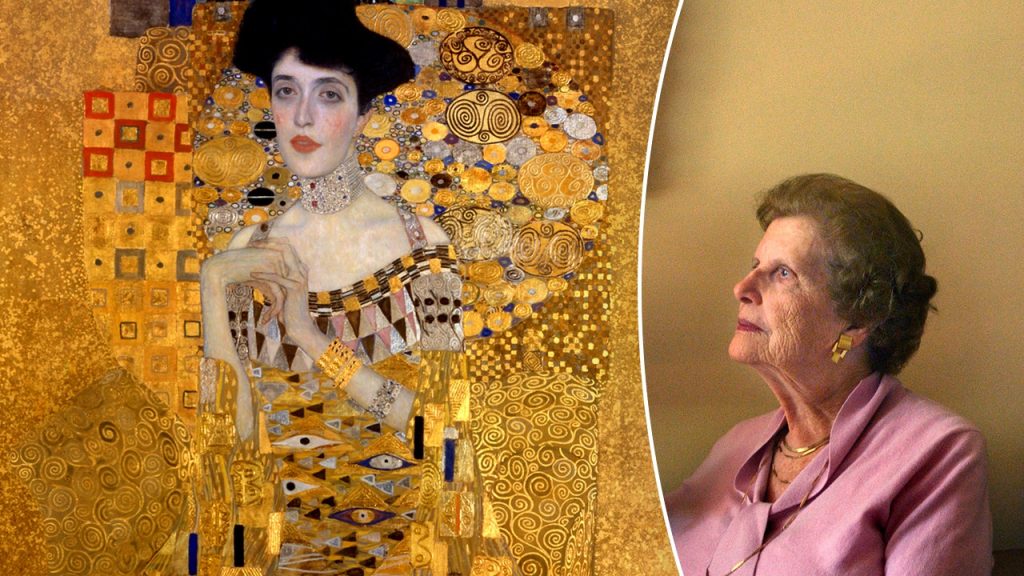The “Portrait of Adele Bloch-Bauer I” by Gustav Klimt is a famous piece of artwork depicting Adele Bloch-Bauer, the wife of Ferdinand Bloch-Bauer. Commissioned in 1903, the portrait was completed four years later in 1907 and is considered a masterpiece from Klimt’s “golden style” of artwork. Adele is portrayed in golden tones, covered in expensive jewelry, and in an ambiguous position, leaving viewers unsure if she is sitting or standing. The portrait was inspired by Klimt’s admiration for the mosaics of the Church of San Vitale in Ravenna, Italy, which he visited in the year he was commissioned to paint Adele.
In January 1925, Adele Bloch-Bauer tragically died at the age of 43 after contracting meningitis. Following her death, the portrait was displayed in the family’s home until the Nazis invaded Austria in 1938. Ferdinand Bloch-Bauer fled and left the valuable art collection behind, which was seized by the Nazis. Ferdinand died in November 1945 without ever retrieving his art collection, including the “Portrait of Adele Bloch-Bauer I,” which was renamed “Woman in Gold” and displayed in Vienna for many years. Maria Altmann, a family heir who had escaped to California, fought for the return of the art collection.
In 1998, the Federal Art Restitution Act was passed in Austria, declaring that stolen works of art and cultural objects must be returned to their rightful owners or heirs. Maria Altmann, along with her lawyer Eric Randol Schoenberg, began a legal battle to reclaim her family’s art collection. In January 2006, the United States Supreme Court ruled in Altmann’s favor, and she took possession of the paintings, including the “Portrait of Adele Bloch-Bauer I.” The legal battle and recovery of the art collection was depicted in the 2015 movie “Woman in Gold” starring Helen Mirren as Altmann and Ryan Reynolds as her lawyer.
In June 2006, the “Portrait of Adele Bloch-Bauer I” was purchased for $135 million by Ronald Lauder and is currently on permanent display at Neue Galerie in New York City. The painting remains a significant cultural and historical piece, symbolizing the fight for justice and the reclaiming of lost art by its rightful owners. The artwork’s journey from its creation by Klimt to its acquisition by Lauder is a testament to the enduring value and importance of art as a form of expression, cultural heritage, and investment. The legacy of Adele Bloch-Bauer and the legal battle fought by Maria Altmann have secured the painting’s place in history and brought attention to the issue of art restitution and the importance of preserving cultural treasures.


